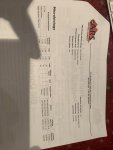Here is the verbatim regulation:
16.15.190 Water, wastewater, and solid waste. A. Potable water shall be provided from a source approved by the department. The water supply shall be adequate for the purposes of the facility and shall meet the standards of 18 AAC 80. B. Samples of pool water shall be collected at least monthly while the pool is in use, at a point near the outlet of the pool, and at any other points designated by the department. The department may increase the frequency of pool water sampling if necessary to assure that the pool water meets the standards of this section. C. Routine samples collected under B. of this section may not: 1. Contain more than 200 bacteria per milliliter, as determined by the standard (heterographic) agar plate count at 35 degrees C; or 2. Show a positive test (confirmed test) for coliform organisms in any of the five 10 milliliter portions of a sample, or when the membrane filter test is used, show positive test (confirmed test) for more than zero coliforms organisms per 100 milliliters. D. Samples of pool water shall be collected and examined in accordance with the American Public Health Association's Standard Methods for the Examination of Water and Wastewater, 16th Edition, 1985. E. If a sample of pool water tests positive for pseudomonas or other pathogens, the pool shall be closed until sampling shows that the water is free of the pathogen. F. Samples of pool water shall be examined by a laboratory approved by the department. G. If chlorine is used as a disinfectant, the level of free chlorine shall provide a molecular hypochlorous yield of not less than 0.3 mg/l. The yield shall be determined either mathematically or by using the graph in Table E of this subsection.



